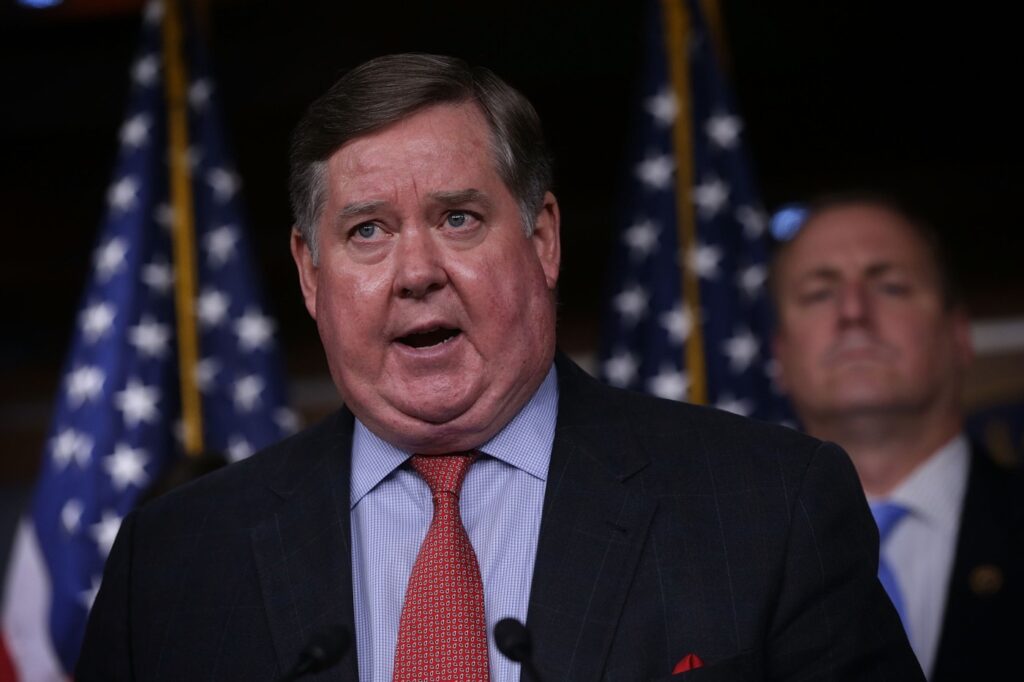
Big change was in store for people like John Garamendi and Ken Calvert and Raul Ruiz from the moment California’s bipartisan and fairly apolitical redistricting commission published its final maps in mid-December.
But only now that the March 11 filing deadline has passed can we see which longtime members of Congress will be threatened and who will not.
Garamendi, a onetime lieutenant governor, looks fine, even though much of his old district may soon go to fellow Democrat Josh Hawley, who has mostly represented territory a little south of his new 13th District. Hawley also looks safe.
But longtime Republican Rep. Ken Calvert can’t be so sanguine.
Calvert, an Inland Empire congressman who has represented districts with numbers 42 and 43 since 1993, now must run in the new 41st. He gets to keep his hometown of Corona, once near the center of his territory, but that city sits in the far western portion of his new district. More populous are added cities like Palm Springs and Rancho Mirage, the heart of the Coachella Valley constituency that has sent Democrat Ruiz to Washington, D.C., since 2013.
Calvert may have trouble defending the new seat, which also includes cities like Anza and Calimesa, but if it had been a district in 2020, it would have voted for ex-President Donald Trump by a 1 percent margin. Calvert’s old district went for Trump by 7 percent.
Ruiz, meanwhile, keeps the far eastern Coachella Valley parts of his old district centering on Indio, and gets new territory extending south toward the Imperial Valley and the Mexican border. He looks safe, but has said he’s chagrined at losing the unity of his old district covering the area from Palm Springs east.
Who both men face next fall will be determined in the state’s June 7 “jungle” primary, where the two leading vote-getters move on to the November runoff election. So far, Calvert appears likely to face tougher competition than Ruiz.
Further west, in the new 47th District of Orange County, including cities from Seal Beach in the north to Laguna Beach in the south and swinging inland to take in Orange and Irvine, two-term incumbent Katie Porter looks like a survivor. She has already run off former one-term fellow Democratic Congressman Harley Rouda and may face onetime county Republican chairman Scott Baugh this fall, but has far more money on hand than any potential opponent.
In the Sacramento area, current Placer County Republican Rep. Tom McClintock moves south to a new and very safely conservative district stretching toward the Nevada state line. Current Assemblyman Kevin Kiley, who represents some of northeast Sacramento and suburbs, along with Sacramento County Sheriff Scott Jones will contest in June, together with a few Democrats. One of them could survive into November if Kiley and Jones essentially split the GOP vote in the new 3rdDistrict.
For reasons unknown, Kiley believes the 3.5 percent of the recall replacement vote he got in last fall’s gubernatorial recall election qualifies him to advance. But he polled a mere 15.6 percent in Placer County, which he has represented in the Legislature and which is the population key to the new district.
In the central San Joaquin Valley, the oft-challenged Republican Rep. David Valadao, one of the very few GOP congressmen voting to impeach Trump in early 2021, will run in a new district that seems even more Latino and Democratic than his old one, where he split the last two elections with Democrat T.J. Cox.
Related Articles
Congress must play central role in deciding Russia-Ukraine war involvement
How will Newsom’s gas price relief promise work?
Working Californians hit hard by gasoline prices
Objectivity and balance shouldn’t be sacrificed in news reporting
An even sadder field left to challenge Newsom
He’s expected to face Democratic Assemblyman Rudy Salas this fall in what could be a tight election.
The bottom line is that there are new districts like these all around California, one reason folks like Rouda and current representatives like Jerry McNerney and Jackie Speier are getting out of this rat race and retiring.
For folks like Calvert and Garamendi, who have not previously had to worry much about reelection races, the anxiety the contests bring is unwelcome.
It could also bring newer, more energetic representation to the state, and maybe even a more unified purpose to the entire 52-person congressional delegation.
The primary will begin to tell that story.
Email Thomas Elias at tdelias@aol.com.
